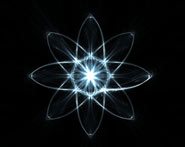


 الفيزياء الكلاسيكية
الفيزياء الكلاسيكية
 الكهربائية والمغناطيسية
الكهربائية والمغناطيسية
 علم البصريات
علم البصريات
 الفيزياء الحديثة
الفيزياء الحديثة
 النظرية النسبية
النظرية النسبية
 الفيزياء النووية
الفيزياء النووية
 فيزياء الحالة الصلبة
فيزياء الحالة الصلبة
 الليزر
الليزر
 علم الفلك
علم الفلك
 المجموعة الشمسية
المجموعة الشمسية
 الطاقة البديلة
الطاقة البديلة
 الفيزياء والعلوم الأخرى
الفيزياء والعلوم الأخرى
 مواضيع عامة في الفيزياء
مواضيع عامة في الفيزياء|
Read More
Date: 14-8-2020
Date: 25-8-2020
Date: 17-8-2020
|
The Principia of Isaac Newton
In this great work, Newton seized all the astronomical and physical phenomena available, organized them, demonstrated how they followed from his three laws of motion and the law of universal gravitation, predicted new observational data and laid the foundations of mathematical physics so firmly that much of the researches of mathematicians, scientists and astronomers in the next two and a half centuries became efforts to develop logically the consequences of his theory of the World. Among the contents of the Principia were the following:
He proved that a rotating globe such as the Earth would be flattened slightly at the poles due to the centrifugal force in its equatorial regions ‘diluting’ the force of gravity in these regions. This protuberance of matter at the equator would be acted upon by the Moon and Sun, causing the Earth’s axis of rotation to precess slowly like the axis of a spinning top or gyroscope so that the axis sweeps out a cone. The precession of the equinoxes, a consequence of this, had been discovered by Hipparchus about 134 BC but until Newton’s time had remained unexplained.
He proved that under the law of gravitation, a planet would move in an ellipse about the Sun under Kepler’s laws and that this ellipse would change slightly in size, shape and orientation over the years because of the attractions of the other planets. In this way he accounted for hitherto unexplained changes in the orbits of Jupiter and Saturn. He also showed how to measure the mass of any planet that had one or more satellites.
In the case of the Moon’s orbit—an extremely complicated problem that, as Newton once remarked to his friend Edmund Halley, ‘made his head ache and kept him awake so often that he would think of it no more’—he was able to prove that certain irregularities in its movement about the Earth were due to the Sun’s attraction and he predicted some features that were subsequently found by observation.
He even demonstrated (see figure 1) that if a projectile were fired with sufficient velocity from a cannon at the top of a terrestrial mountain so high it was outside the Earth’s atmosphere, it would describe a circle or ellipse about the Earth. It would, barring a collision, go on revolving about the Earth indefinitely. In other words, three hundred years before Newtonian science had developed far enough to put the first artificial satellite into orbit, Isaac Newton predicted its possibility.
He also explained the phenomenon of the tides as an additional consequence of the law of gravitation, laying the foundations of all the modern work on that subject. He showed that the orbits of comets were also governed by this law and described how their paths could be calculated.

Figure 1. Newton’s suggestion of an artificial satellite.
In addition to all this, the book contained the solutions of many problems in the motions of fluids, accounts of ingenious experiments, the theory of the calculus and other brilliant researches.
It has been said that when the Principia appeared, there were only half a dozen men alive capable of really understanding it. Many probably realized when they bought the book—it sold for some ten or twelve shillings—that here was a milestone in science. They could hardly realize that, in fact, the publication of the Principia marked the birth of the modern scientific world, in general, and modern astronomy, in particular.



|
|
|
|
كل ما تود معرفته عن أهم فيتامين لسلامة الدماغ والأعصاب
|
|
|
|
|
|
|
ماذا سيحصل للأرض إذا تغير شكل نواتها؟
|
|
|
|
|
|
|
جامعة الكفيل تناقش تحضيراتها لإطلاق مؤتمرها العلمي الدولي السادس
|
|
|